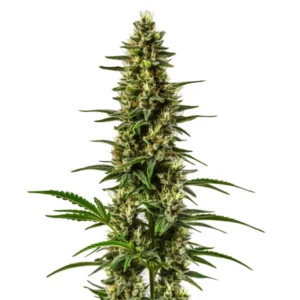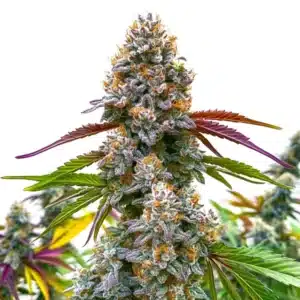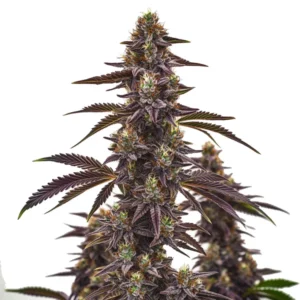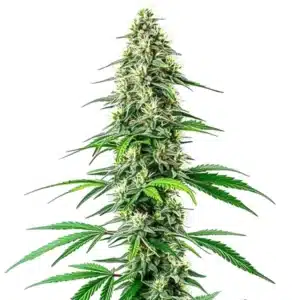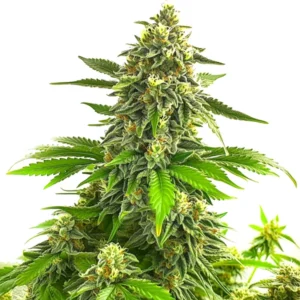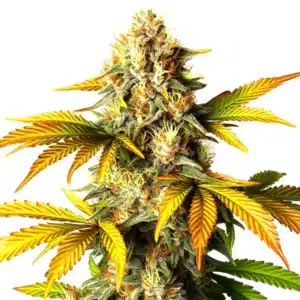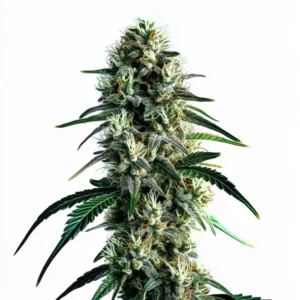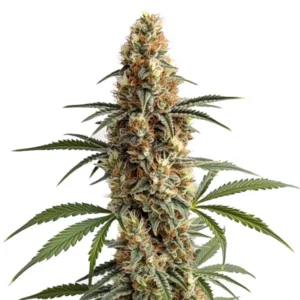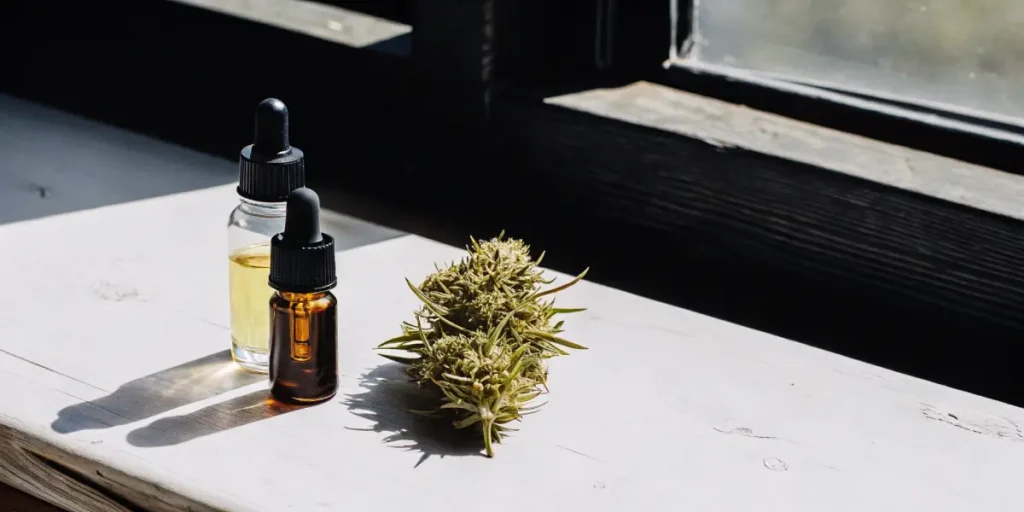
Cannabis Aroma Explained by Terpenes
The unique aroma of cannabis is a captivating field of study. Most often, this scent is attributed to compounds known as terpenes. These natural compounds are found in a variety of plants, including cannabis. They play a crucial role in creating the distinctive fragrance each strain offers. Whether you’re a first-time buyer or a seasoned grower, understanding how terpenes influence cannabis aroma profile can enhance your cultivation and consumption experience.
Terpenes are not just about the smell. They are an essential part of the plant’s defense mechanism. In nature, these compounds serve to protect plants from predators and attract pollinators. In cannabis, they contribute significantly to the plant’s aroma, resulting in diverse scent profiles. Each strain has its own unique combination of terpenes, which results in distinct aromas that can range from fruity and sweet to earthy and skunky.
Recommended Strains
Lemon OG
|
|
THC | 16% - 24% (Medium) |
|
|
Type | Feminized |
|
|
Yield | Medium |
|
|
Phenotype | 55% Indica / 45% Sativa |
Critical Daddy Purple
|
|
THC | 19% (Medium) |
|
|
Type | Feminized |
|
|
Yield | High |
|
|
Phenotype | 50% Indica / 50% Sativa |
Let’s delve deeper into the cannabis aroma science terpenes breakdown to understand how these compounds create the scent profiles we love. From understanding cannabis scent through terpenes to exploring real-life examples, this analysis will provide valuable insights into the aromatic world of cannabis.
Cannabis Aroma Science Terpenes Breakdown
Terpenes are hydrocarbons produced in the trichomes of cannabis plants. These compounds significantly contribute to the complex scent profiles of cannabis. While over 100 different terpenes have been identified, only a handful dominate the aroma profiles of most cannabis strains. These include myrcene, limonene, and pinene, among others.
Myrcene is one of the most common terpenes found in cannabis. It often contributes to the earthy, musky scent present in many strains. Strains like Critical Daddy Purple from Blimburn Seeds are known for their myrcene-rich aroma. Limonene, as the name suggests, imparts a citrusy fragrance. This terpene is prevalent in strains such as Lemon OG, giving them a fresh, zesty aroma. Pinene, another common terpene, lends a pine-like scent, reminiscent of a forest.
This cannabis aroma science terpenes breakdown is crucial for both growers and consumers. It provides a framework for predicting the aromatic outcomes of different strains, ensuring that the desired fragrance profile is achieved. By knowing which terpenes dominate a plant, cultivators can tailor their growing practices to enhance specific scent profiles, while consumers can make informed choices that align with their sensory preferences.
Moreover, the cannabis aroma explained by terpenes offers a gateway into the broader world of botany and chemistry. By studying these compounds, enthusiasts can gain a deeper appreciation for the intricate processes that occur within the plant, leading to the diverse aromatic experiences available in the cannabis market. This knowledge not only enriches the consumer experience but also fosters innovation in breeding and cultivation practices.
Knowing Cannabis Scent Through Terpenes
Each terpene not only influences the aroma but can also affect the overall experience of consuming cannabis. For instance, limonene doesn’t just offer a citrusy scent; it may also elevate mood and relieve stress. Similarly, pinene, besides its refreshing aroma, is believed to help with alertness and memory retention. By knowing cannabis scent through terpenes, consumers can select strains that align with their preferences and desired effects.
Real-life examples help to bring this into focus. A strain like Zkittlez from Blimburn Seeds offers a fruity, candy-like aroma which is largely attributed to its high levels of limonene and caryophyllene. These terpenes not only make Zkittlez smell delightful but also contribute to its mood-enhancing effects. On the other hand, strains with higher levels of myrcene might be more suitable for those looking to relax and unwind.
Knowing cannabis scent through terpenes also opens up opportunities for personalized cannabis experiences. By identifying specific terpene profiles that resonate with individual preferences, users can customize their consumption to achieve desired effects, whether it be relaxation, focus, or creativity. This personalized approach to cannabis consumption is revolutionizing the way people interact with the plant.
Additionally, the exploration of cannabis aroma explained by terpenes is leading to new discoveries in therapeutic applications. Researchers are investigating the potential health benefits of terpenes, such as their anti-inflammatory, analgesic, and antidepressant properties. As the understanding of these compounds grows, so too does the potential for developing targeted cannabis therapies that harness the power of terpenes.
Promos & Deals
Terpenes Role in Cannabis Fragrance Explanation
The terpenes role in cannabis fragrance explanation extends beyond just the smell. These compounds interact synergistically with cannabinoids, influencing both the aroma and the effects of the plant. This interaction is often referred to as the “entourage effect.” It suggests that the combination of terpenes and cannabinoids can enhance or modify the effects of cannabis.
For example, the presence of linalool, a terpene known for its floral scent, can enhance the relaxing effects of THC. This makes strains like Lavender Kush, with its linalool-rich profile, ideal for evening use. Similarly, the peppery aroma of caryophyllene, found in strains like Blackberry Moonrocks from Blimburn Seeds, can complement THC’s effects, adding a dimension of stress relief and relaxation.
The terpenes role in cannabis fragrance explanation also highlights the importance of selecting strains that offer complementary effects. By choosing strains with terpene profiles that align with desired outcomes, consumers can optimize their cannabis experience. This approach not only enhances the aroma but also ensures that the effects are in harmony with individual needs and preferences.
Furthermore, the cannabis aroma explained by terpenes sheds light on the potential for breeding new strains with unique fragrance profiles. By knowing how terpenes interact with cannabinoids, breeders can experiment with cross-breeding to create strains that offer novel aromatic and therapeutic experiences. This innovation is paving the way for a more diverse and exciting cannabis market.

How Terpenes Influence Cannabis Aroma Profile
How terpenes influence cannabis aroma profile is a fascinating exploration of chemistry and botany. Each strain is a unique cocktail of terpenes, resulting in a wide array of aromas. This diversity allows growers and consumers to select strains based on their preferred scent profiles and desired effects.
Consider the strain Gelato, known for its sweet and creamy aroma. This delightful scent is primarily due to its balanced mix of limonene and humulene. These terpenes not only create a pleasant aroma but also enhance the strain’s calming effects. On the other hand, a strain like Super Silver Haze, with its spicy and herbal aroma, is rich in terpinolene and myrcene, offering an invigorating and uplifting experience.
How terpenes influence cannabis aroma profile is also a testament to the complexity of the cannabis plant. Each strain’s unique terpene composition is a result of genetics, environmental conditions, and cultivation practices. This intricate interplay of factors contributes to the vast array of aromatic experiences available to consumers, ensuring that there is a strain for every preference.
Moreover, the cannabis aroma explained by terpenes is an opportunity for growers to differentiate their products in a competitive market. By emphasizing the distinct terpene profiles of their strains, cultivators can attract consumers seeking specific aromatic and therapeutic experiences. This focus on terpenes is revolutionizing the way cannabis is marketed and consumed, offering a more nuanced and personalized approach to cannabis enjoyment.
Detailed Analysis of Cannabis Aroma via Terpenes
A detailed analysis of cannabis aroma via terpenes combines scientific inquiry with sensory experience. By breaking down the terpene content of a strain, one can gain insights into its potential aroma and effects. This analysis is invaluable for both breeders and consumers aiming to optimize their cannabis experience.
For instance, a strain with a high concentration of terpenes like limonene and pinene will likely have a refreshing, uplifting aroma. This can be ideal for daytime use when a boost of energy and focus is desired. Conversely, strains rich in myrcene and linalool may offer a more soothing, relaxing scent, perfect for unwinding after a long day.
A detailed analysis of cannabis aroma via terpenes also plays a crucial role in advancing cannabis research. By examining the specific terpene profiles of various strains, researchers can better understand their potential effects and therapeutic applications. This knowledge is essential for developing new cannabis-based treatments and enhancing the overall understanding of the plant’s capabilities.
Additionally, the cannabis aroma explained by terpenes provides valuable insights for consumers looking to elevate their cannabis experience. By understanding the nuances of terpene profiles, individuals can select strains that align with their desired effects and aroma preferences. This informed approach to cannabis consumption is empowering users to make choices that enhance their enjoyment and meet their specific needs.
Real-Life Examples and Practical Applications
Consider the strain Blue Dream, a favorite among many cannabis enthusiasts. Its aroma, a mix of blueberry and earthy undertones, is primarily due to its high levels of myrcene and pinene. This combination not only creates a pleasant smell but also contributes to its balanced, calming effects. Blue Dream is a prime example of how a detailed analysis of cannabis aroma via terpenes can enhance your appreciation and understanding of a strain’s characteristics.
Another example is the strain Gorilla Glue #4, known for its potent effects and distinctive aroma. This strain’s scent is a complex blend of earthy and sour notes, thanks to its unique terpene profile dominated by caryophyllene and limonene. Knowing how these terpenes interact can offer insights into why this strain is so popular among users seeking strong, long-lasting effects.
These real-life examples underscore the value of understanding cannabis scent through terpenes. By exploring the specific terpene compositions of popular strains, consumers can make informed decisions that enhance their cannabis experience. Whether seeking relaxation, stimulation, or therapeutic benefits, understanding terpenes provides a roadmap to achieving desired outcomes.
Furthermore, the practical applications of cannabis aroma explained by terpenes extend to the cultivation and marketing of cannabis products. By highlighting the unique aromatic qualities of their strains, growers can differentiate their offerings and appeal to a broader audience. This focus on terpenes is transforming the cannabis industry, offering consumers a more tailored and satisfying experience.

Frequently Asked Questions
What are terpenes, and how do they affect cannabis aroma?
Terpenes are aromatic compounds found in many plants, including cannabis. They are responsible for the distinct scents associated with different cannabis strains. Each terpene has its own unique aroma profile, ranging from citrusy and sweet to earthy and spicy. In cannabis, these compounds not only create the aroma but can also influence the plant’s overall effects.
When you smell a strain like Lemon Haze, the citrusy scent comes from the terpene limonene. This terpene is not only responsible for the fresh smell but also contributes to the strain’s uplifting and mood-enhancing effects. Knowing terpenes can help users choose strains based on desired aromas and experiences.
The cannabis aroma explained by terpenes is an essential aspect of the cannabis consumption experience. By familiarizing themselves with the different terpenes and their effects, consumers can select strains that align with their preferences and needs. This knowledge empowers users to make informed choices and enhances their overall enjoyment of cannabis.
Additionally, understanding cannabis scent through terpenes is critical for those interested in the therapeutic potential of cannabis. By identifying the specific terpenes present in a strain, individuals can explore the potential health benefits and select strains that may offer relief for various conditions. This informed approach to cannabis use is paving the way for more personalized and effective treatments.
How can I use terpene profiles to choose the right cannabis strain?
When selecting a cannabis strain, considering its terpene profile can be incredibly helpful. By focusing on the terpenes present, you can predict both the aroma and potential effects of the strain. This knowledge allows you to choose strains that align with your preferences, whether you’re looking for relaxation, energy, or mood enhancement.
For example, if you prefer fruity aromas and uplifting effects, a strain rich in limonene and pinene might be ideal. Conversely, if you’re seeking a more relaxing experience, a strain with higher levels of myrcene and linalool could be more suitable. By understanding how terpenes influence cannabis aroma profile, you can make more informed decisions about your cannabis consumption.
Using terpene profiles to choose the right cannabis strain is an effective strategy for achieving desired outcomes. By identifying the aromatic and therapeutic properties of specific terpenes, consumers can tailor their cannabis experience to match their preferences and needs. This personalized approach to strain selection is revolutionizing the way people interact with cannabis.
Furthermore, the cannabis aroma explained by terpenes provides a framework for exploring new strains and expanding one’s cannabis repertoire. By experimenting with different terpene profiles, users can discover new aromatic experiences and effects, enriching their overall enjoyment of cannabis. This exploration of terpenes is fostering a deeper appreciation for the complexity and diversity of the cannabis plant.
Can terpenes affect the potency of cannabis?
While terpenes themselves do not directly affect the potency of cannabis, they can influence the overall experience through the entourage effect. This phenomenon occurs when terpenes interact with cannabinoids like THC and CBD, potentially enhancing or modifying their effects. This interaction can lead to a more balanced and tailored cannabis experience.
For instance, caryophyllene, a terpene with a spicy aroma, can interact with THC to provide additional stress-relief properties. Similarly, the calming effects of linalool may complement the effects of CBD, making strains with these terpene profiles ideal for relaxation. Understanding this interaction can help consumers select strains that meet their specific needs.
The cannabis aroma explained by terpenes highlights the importance of considering terpene profiles when evaluating the overall experience of a strain. By understanding how terpenes interact with cannabinoids, consumers can make informed choices that enhance their cannabis experience. This knowledge is essential for optimizing the effects and enjoyment of cannabis.
Additionally, the terpenes role in cannabis fragrance explanation sheds light on the potential for developing new products that leverage the entourage effect. By formulating strains and products with specific terpene and cannabinoid combinations, producers can create targeted experiences that cater to a wide range of consumer preferences and therapeutic needs. This innovation is driving the evolution of the cannabis industry.
Are there any cannabis strains with unique terpene profiles?
Yes, many cannabis strains boast unique terpene profiles that set them apart from others. These profiles contribute to the distinctive aromas and effects associated with each strain. For example, the strain Jack Herer is known for its spicy, pine-like aroma due to its high levels of terpinolene and pinene.
Another example is the strain Tangie, famous for its strong tangerine aroma. This scent is a result of its limonene-dominant terpene profile. Strains like these offer unique aromatic experiences, making them popular choices among cannabis enthusiasts seeking something different.
These unique terpene profiles not only enhance the aromatic appeal of cannabis strains but also contribute to their therapeutic potential. By exploring the diverse range of terpenes present in different strains, consumers can discover new aromatic and therapeutic experiences that align with their preferences and needs. This exploration of terpenes is enriching the cannabis consumption experience.
Furthermore, the cannabis aroma explained by terpenes underscores the importance of genetic diversity in cannabis breeding. By cultivating strains with distinct terpene profiles, breeders can offer consumers a wider variety of aromatic and therapeutic options. This focus on terpene diversity is driving innovation in the cannabis industry and expanding the possibilities for personalized cannabis consumption.
How do environmental factors affect terpene production in cannabis?
Environmental factors can significantly influence terpene production in cannabis plants. Conditions such as temperature, humidity, and light exposure play a crucial role in determining the terpene profile of a strain. For instance, cooler temperatures can enhance the production of certain terpenes, leading to more pronounced aromas.
Growers can manipulate these conditions to optimize terpene production and enhance the aromatic qualities of their crops. By understanding how environmental factors impact terpene synthesis, cultivators can produce cannabis with desirable scent profiles, catering to the preferences of consumers.
Knowing the relationship between environmental factors and terpene production is essential for cultivating high-quality cannabis with rich aromatic profiles. By carefully controlling growing conditions, cultivators can enhance the production of specific terpenes, resulting in strains with unique and desirable scents. This attention to detail is key to producing cannabis that stands out in a competitive market.
Additionally, the cannabis aroma explained by terpenes provides insights into the potential for developing cultivation techniques that maximize terpene expression. By experimenting with different environmental variables, growers can discover new ways to enhance the aromatic and therapeutic qualities of their strains. This focus on terpene production is driving innovation in cannabis cultivation and offering consumers a more diverse array of aromatic experiences.


